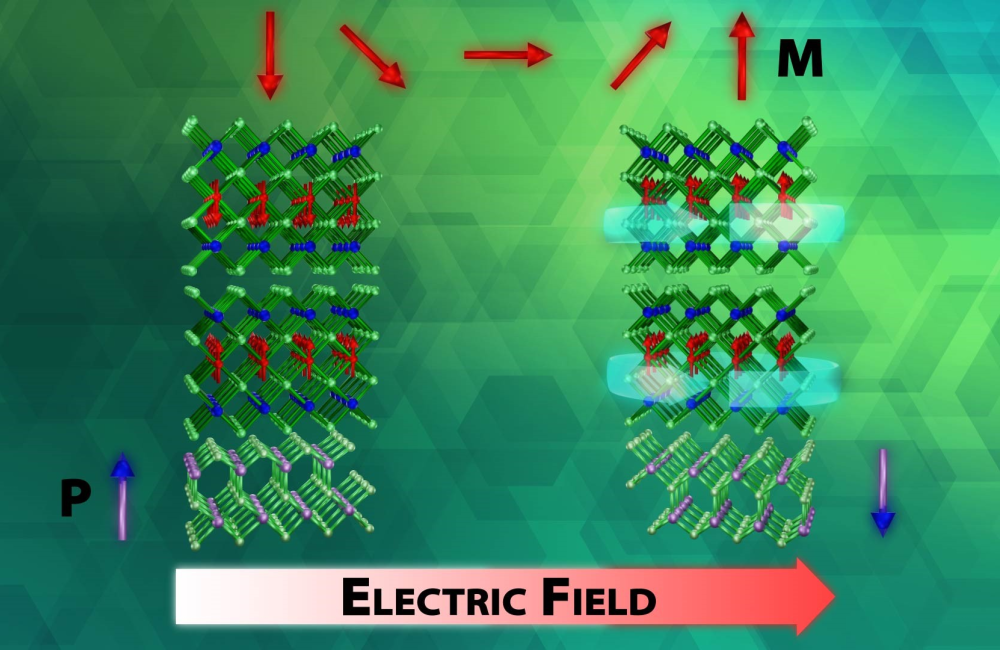Novel Way to Manipulate Exotic Materials

Finding could revolutionize electronics, quantum computing
An advance in a topological insulator material — whose interior behaves like an electrical insulator but whose surface behaves like a conductor — could revolutionize the fields of next-generation electronics and quantum computing, according to scientists at Oak Ridge National Laboratory.
Discovered in the 1980s, a topological material is a new phase of material whose discoverers received a Nobel Prize in 2016. Using only an electric field, ORNL researchers have transformed a normal insulator into a magnetic topological insulator. This exotic material allows electricity to flow across its surface and edges with no energy dissipation. The electric field induces a change in the state of matter.

A new method to control quantum states in a material is shown. The electric field induces polarization switching of the ferroelectric substrate, resulting in different magnetic and topological states.
“The research could result in many practical applications, such as next-generation electronics, spintronics and quantum computing,” said ORNL’s Mina Yoon, who led the study.
Such matter could lead to high-speed, low-power electronics that burn less energy and operate faster than current silicon-based electronics. The ORNL scientists published their findings in 2D Materials.
Read the original article on Oak Ridge National Laboratory.
